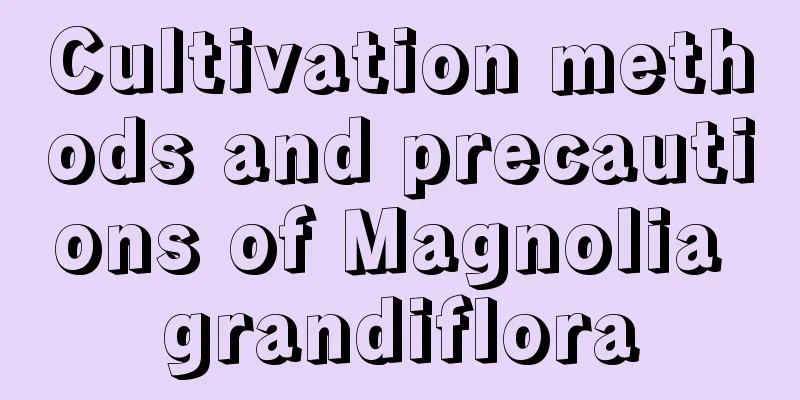What herbicide can be used to eradicate the roots of the cupflower?

|
Convolvulus, also known as field bindweed, small bindweed, and rabbit ear grass, belongs to the genus Convolvulus, a dicotyledonous plant. It is harmful to corn, cotton, soybeans, fruit trees, wheat, etc. When it occurs in large numbers, it often grows in patches, densely covering the ground, winding upward, strongly inhibiting crop growth and causing crops to lodging. So what herbicide can be used to eradicate the herbicide? Let’s take a look below. 1. The harm of the flower of the bowl The vitality of the cup-shaped flower is very tenacious. It likes to grow in a moist and fertile environment, but it is not very demanding on the soil. It has strong adaptability and is both heat-resistant and drought-resistant. It often grows on roadsides, wastelands , and farmlands. The cup-shaped flower also has the characteristics of strong reproductive ability and fast growth rate, which can cause great harm to farmland crops, especially causing great yield reductions on corn and sorghum. This is because the cup-shaped flower can be spread through seeds, root buds, and stem buds. In farmland, it mainly relies on asexual reproduction to thrive, and birds and other mammals can spread it after eating it. Although the plant of the cupflower is short and its stem is very thin, it grows very fast. It is like a slender snake that can constantly entwine around the leaves of crops such as corn and then continue to grow, causing the corn leaves to be unable to stretch, which can easily lead to a reduction in corn production. 2. What herbicide can be used to eradicate the roots of the cupflower? 1. 10% sulfamethoxam aqueous solution (1) When the dosage is 1800g/hectare, the plant protection effect is about 93.3% and the fresh weight protection effect is about 97.7%. (2) When the dosage is 1200g/hectare, the plant protection effect is about 88.5% and the fresh weight protection effect is about 93.7%. 2. 20% clofopyralid emulsifiable concentrate (1) When the dosage is 900g/hectare, the plant protection efficiency is about 97.2% and the fresh weight protection efficiency is about 98.2%. (2) When the dosage is 750g/hectare, the plant protection effect is about 92.9% and the fresh weight protection effect is about 92.2%. 3. 56% dimethyl tetrachloride soluble powder (1) When the dosage is 1500g/hectare, the plant protection effect is about 93.7% and the fresh weight protection effect is about 93.4%. (2) When the dosage is 1200g/hectare, the plant protection effect is about 94.4% and the fresh weight protection effect is about 91.9%. 4. 72% 2,4-D butyl ester emulsifiable concentrate (1) When the dosage is 900g/hectare, the plant protection effect is about 85.7% and the fresh weight protection effect is about 95.2%. (2) When the dosage is 600g/hectare, the plant protection effect is about 69% and the fresh weight protection effect is about 89.4%. 5. 88% 2,4-D 2-ethylhexyl ester emulsifiable concentrate (1) When the dosage is 750g/hectare, the plant protection effect is about 86.9% and the fresh weight protection effect is about 92.4%. (2) When the dosage is 500g/hectare, the plant protection effect is about 79% and the fresh weight protection effect is about 87.8%. 6. 35% dimethyl glyphosate aqueous solution For malignant weeds such as prickly ash, cupflower, and cyperus rotundus in non- arable fields, during the peak period of weed occurrence, on a sunny morning with no wind, use 200-350ml of 35% dimethyl glyphosate aqueous solution diluted with 30-50kg (2 buckets of water) per acre for spraying. That’s it |
<<: Can I sprinkle water on the leaves of roses? What should I do if I water too much?
>>: The correct way to water roses, can you water the leaves?
Recommend
What should I do if Ji Yulu grows too tall?
The reason why Ji Yulu grows too long The phenome...
Disease and insect pest control of glutinous rice strips
1. Leaf spot The pathogen of this disease can ove...
How does lucky bamboo survive the winter? What is the minimum temperature for lucky bamboo to survive the winter?
1. Control the temperature It has poor cold resis...
Is growing potatoes profitable? The cost and profit of growing potatoes
Is growing potatoes profitable? Potatoes are a ve...
Put a diaper in the pot, the cuttings will take root 100%, and they will grow even if you don’t water them for half a month!
Diaper hydroponic pineapple, rooting speed is ver...
How to make a bald tree split, how to prune it if it is too tall
1. How to fork 1. Ensure sunlight: Although the s...
Why does the rubber tree lose its leaves?
The rubber tree is a very suitable potted green p...
What are the new varieties of seedlings?
1. New varieties of seedlings Many old seedling v...
How to use ferrous sulfate correctly for home gardening (how to use ferrous sulfate for the best effect)
Ferrous sulfate mainly contains iron, which is us...
Can onions be eaten raw? Can onions be eaten after they sprout?
1. Can it be eaten raw? Of course it can be eaten...
Can dandelion root be consumed for a long time? How much does dandelion root cost per pound?
1. Can I drink it for a long time? You can drink ...
The correct way to water Kalanchoe, what to do if you water too much
1. Watering method If you want the Kalanchoe to g...
How to make the rubber tree grow thicker
1. Topping We can top it off, but we need to pay ...
How to Plant American Dianthus Seeds
1. Harvesting After the flowers fall, we can star...
Should I use a deep or shallow pot for Amaryllis?
1. Use a deep or shallow basin When planting amar...









